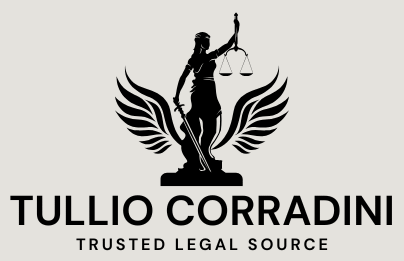Image Credits: © Vyacheslav Argenberg / http://www.vascoplanet.com/, Creative Commons 4.0 License
By Alisa Grishin
Since the advent of human existence, we have been creating. These creations – the art, monuments, cities, and artifacts – of our ancestors have prevailed for generations, constantly linking us to the past and reminding us of cultural origins. For this, many of these tangible creations have cemented themselves as valuable pieces and places of cultural heritage that necessitate organized protective and preservative measures. In times of peace, these measures are relatively straightforward as governments have the ability to allocate time, money, and other resources to safeguard their cultural heritage assets. In times of war and conflict, however, complications are compounded by the increased risk of damage and destruction.
Certain international laws and mutual understandings regarding cultural property protection (CPP) have existed for centuries, but efforts were amplified following the Nazi looting during World War II (WW2). A decade after WW2 ended, the 1954 Convention for the Protection of Cultural Property in the Event of Armed Conflict, better known as the 1954 Hague Convention, outlined the commitments of states to respect cultural heritage. Citing a humanitarian need for cultural respect and community building, this provided international support for countries facing armed conflict. 16 years later, The 1970 Convention on the Means of Prohibiting and Preventing the Illicit Import, Export and Transfer of Ownership of Cultural Property was held to extend cultural heritage protection to the art market and 25 years after that came The 1995 UNIDROIT Convention on Stolen or Illegally Exported Cultural Objects. While these conventions are not representative of every law regarding cultural property, they have remained significant references for international precedence.
In the Middle East and North Africa (the MENA region), efforts to preserve cultural heritage are often compounded by armed conflict. With such threats, sustainable approaches are vital to supporting long-term preservation. While the involvement of the United Nations Educational, Scientific and Cultural Organization (UNESCO) and other international organizations play a major role in awareness, advocacy, and resources, many CPP approaches are beginning to emphasize the involvement of local communities, as well. By including local communities, CPP can be sustained without the aid of external organizations and funds. This article will explore three organizations, examples of their current operations in the MENA region, and their success thus far. Since CPP is an ongoing endeavor, their “success” is determined by their long-term plans and initiatives, including sustainable approaches.
These sustainable approaches recognize that heritage is to be engaged with rather than simply preserved. The physical act of mending a roof or laying bricks has a significant impact on the structural integrity of a building, but it also reinforces traditional craft skills, practices, and relationships associated with ancestral land; it preserves the intangible heritage of ideas, actions, and beliefs. Because this tangible and intangible heritage is far more personal to local communities, the involvement showcased in the following examples is crucial to understanding the cultural heritage at hand and ensuring that authentic methods of preservation can be revisited in the future.
Blue Shield International
One group that has taken crucial action in cultural heritage protection is Blue Shield International (BSI). As a “non-governmental, non-profit, international organisation committed to the protection of heritage across the world,” BSI works to implement cultural restoration and protection projects. With the Lebanese Civil War and Hezbollah-Israeli War still at the forefront of Lebanon’s mind (as well as the ongoing conflict in neighboring countries), BSI recently organized a training program on the 1954 Hague Convention for the Lebanese Armed Forces. A collaboration with the UNESCO Regional Office of Beirut and the Newcastle University, this exercise helps support existing structures in Lebanon that support CPP, such as the Lebanese National Committee for the Blue Shield.
According to Blue Shield, the participants “were encouraged to explore and discuss the military responsibilities and opportunities provided by legal instruments relating to cultural property protection (CPP) with the aim of increasing their knowledge and understanding of Armed Forces obligations with regard to CPP before, during, and in the aftermath of conflict or natural disaster and over the long term.” By exploring topics such as antiquities trafficking, community enrichment, humanitarian law, legal instruments for cultural heritage protection, and the importance of culture, the participants were able to contextualize their role in the legal system as defenders of cultural heritage.
Since this recently occurred in November 2021, the effectiveness of this particular training cannot be fully determined, but it does hold promising results since this is a regular activity of BSI (see here for a list of previous trainings). BSI has invested time into these trainings over the years because the involvement of law enforcement in the field of CPP means that the standards of international law can be practiced on a local level. According to the 1954 Hague Convention, states in agreement with the convention’s protocols are expected to be “promoting the Convention among the general public and through target groups such as cultural heritage professionals and military or law-enforcement agencies.” This obligation reiterates the need for local law officials to carry out international expectations regarding the safeguarding of cultural heritage. Blue Shield’s training program is just one example of states putting this into action, but it maintains how the convention’s resolutions are relevant even in today’s conflicts.
International Alliance for the Protection of Heritage in Conflict Areas (ALIPH)
Another organization, ALIPH, focuses on providing grants for “preventive protection to limit the risks of destruction, emergency measures to ensure the security of heritage, and post-conflict actions to enable local populations to once again enjoy their cultural heritage.” With projects all across the MENA region, they have recently taken up a new project in Bandiagara, Mali titled “Rehabilitation of Granaries And Traditional Houses, and Restoration of Traditional Objects at The World Heritage Site Of Bandiagara.” A World Heritage Site since 1989, the Cliff of Bandiagara is known for its architecture that harmoniously complements the natural landscape. After withstanding considerable damage during the 2012 Malian coup d’état, 30 villages are now undergoing restorations. With the necessary help of local communities, the expected completion date of the project is 2023.
As a World Heritage Site, Bandiagara is protected under international law. Protocols I Article 53 and Protocol II Article 16 of the Geneva Conventions explicitly prohibit the destruction of culturally significant sites, both in international and domestic conflicts. The destruction done was wrong in the eyes of the World Heritage Committee and the general international community but local residents are still the ones who are tasked with restoring the integrity of the site. These communities have therefore helped gather information, raise awareness, work directly with conservation and more to bring attention to various Gin’na (Dogon houses) in several different villages. Remarking on the local communities’ hard work, the Committee has said that:
“community initiatives such as those of [Dogon Initiative Association] and the creation of village committees are to be applauded because they have enabled the conduct of restoration work in several villages (restoration of Gin’na and Toguna). Moreover, these committees are key bodies in the conduct of information and awareness-raising campaigns. It is recommended that the Committee encourage the continuance and strengthening of these campaigns by and with the communities, in particular by involving young people.”
Using a grant of nearly $1 million, UNESCO, the Malian Ministry of Culture, the National Direction of Cultural Heritage, and the Mission of Bandigara will oversee the restoration of the villages. The CPP in question, though, is not exclusively tangible. The Dogons hold centuries-old traditions, many of which are tied to the architectural landscape and heritage. The efforts to preserve these local traditions will not only maintain the cultural integrity of the site but also support the livelihoods of those who inhabit the area. While money is finite and cannot be put towards projects indefinitely, lack of funding is often one of the major obstacles to action. The monetary support of ALIPH and the international support of UNESCO provides these dedicated communities with the means to preserve this historical site.
ICCROM (International Centre for the Preservation and Restoration of Cultural Property)
A third organization, ICCROM (International Centre for the Preservation and Restoration of Cultural Property), provides training, information, research, cooperation, and advocacy for those working in the cultural heritage field. Recently, they have begun workshops for architects and engineers in Mosul, Iraq on the subject of heritage recovery. Working with UNESCO and The University of Mosul, this workshop series operates under the “Revive the Spirit of Mosul” initiative led by UNESCO. With presentations by cultural heritage professionals, visits to UNESCO restoration sites, and discussions on post-war recovery, participants learned about cultural heritage preservation as well as potential career opportunities.
Workshops like these disseminate knowledge in a community. Rather than simply bringing in experts of cultural heritage to assess a situation, it equips local residents to take action independently. By stoking interests in cultural heritage and providing the resources to make an impact, ICCROM and similar groups offer up solutions to present-day problems with long-term sustainable approaches. These benefit communities by upholding their right to maintain their own cultural property rather than pushing them to contract 3rd parties.
The need for sustained architectural interest has been recognized by many cultural heritage professionals, including the International Union of Architects (UIA). In 1996, the UIA first got together with UNESCO to discuss the “social commitment” of architects to be involved in cultural heritage preservation. In the UNESCO/UIA Charter for Architectural Education, they remark that “[they] feel responsible for the improvement of the education and training of future architects to enable them to meet the expectations of XXIst century societies worldwide for sustainable human settlements in every cultural heritage.” Nearly 40 years earlier, the International Council on Monuments and Sites (ICOMOS) met to discuss lingering destruction following the Bombing of Dresden in WW2. In the “Declaration of Dresden on the ‘Reconstruction of Monuments Destroyed by War,’” ICOMOS states that:
“In the task of reconstructing monuments, a highly meticulous scientific methodology has evolved, as well as skills in technology, artistry and craftsmanship. Arising from the legitimate desire of peoples to restore damaged monuments as completely as possible to their national significance, necessary restoration work, going beyond conservation, has attained a high professional level and thereby a new cultural dimension as well.”
The current efforts of ICCROM respond to these decades-long searches for architects and craftsmen. Not only do these efforts meet the needs of cultural heritage professionals but they also train young architects to preserve their culture in a way that only they can.
While there is no end to CPP, there is also no earlier time to start than the present. Motivated by a mutual goal to preserve, protect, and restore, international organizations and local communities are building sustainable procedures and projects to maintain the defining elements of the MENA region. The preservation of cultural heritage sites, cultural property, and traditions is an ongoing endeavor that requires active and conscious efforts. Armed conflict – past, present, and future – cannot erase the need nor the desire to sustain these efforts.
Suggested Readings:
Additional Resources:
Dive into intangible cultural heritage!, UNESCO
Sessions Since 1977 Database, UNESCO
The Operational Guidelines for the Implementation of the World Heritage Convention, UNESCO
About the Author:
Alisa Grishin was an undergraduate intern with the Center for Art Law in Spring 2022 and is currently serving as the Summer 2022 Development Assistant. She is a recent graduate of Salem State University where she completed her B.A. in History. She will soon begin her studies in Belgium in a Masters Program focusing on Cultural Studies.
- Jang,H.;Mennis, J.The Role of Local Communities and Well-Being in UNESCO World Heritage Site Conservation: An Analysis of the Operational Guidelines, 1994–2019. Sustainability 2021,13,7144. https://doi.org/ 10.3390/su13137144 ↑
- Sustainability, in this instance, refers to their ability to build long-term approaches to ongoing problems through the inclusion of local community members. ↑
- Who we are, THEBLUESHIELD.ORG, https://theblueshield.org/about-us/what-is-blue-shield/ (last visited June 19, 2022). ↑
- Beirut Training on 1954 Hague Convention with LAF, THEBLUESHIELD.ORG, https://theblueshield.org/beirut-training-on-1954-hague-convention-with-laf/ (last visited June 19, 2022) ↑
- Beirut Training on 1954 Hague Convention with LAF, THEBLUESHIELD.ORG, https://theblueshield.org/beirut-training-on-1954-hague-convention-with-laf/ (last visited June 19, 2022) ↑
- 1954 Convention for the Protection of Cultural Property in the Event of Armed Conflict, EN.UNESCO.ORG, https://en.unesco.org/protecting-heritage/convention-and-protocols/1954-convention (last visited June 19, 2022). ↑
- Mission, ALIPH-FOUNDATION.ORG, https://www.aliph-foundation.org/en/our-ambition (last visited June 19, 2022). ↑
- Rehabilitation of Granaries and Traditional Houses and Restoration of Traditional Objects at the World Heritage Site of Bandigara, ALIPH-FOUNDATION.ORG, https://www.aliph-foundation.org/en/projects/rehabilitation-of-granaries-and-traditional-houses-and-restoration-of-traditional-objects-at-the-world-heritage-site-of-bandiagara (last visited June 19, 2022). ↑
- Treaties, States parties, and Commentaries: Protocol Additional to the Geneva Conventions of 12 August 1949, and relating to the Protection of Victims of International Armed Conflicts (Protocol I), 8 June 1977., INTERNATIONAL COMMITTEE OF THE RED CROSS, https://ihl-databases.icrc.org/applic/ihl/ihl.nsf/1a13044f3bbb5b8ec12563fb0066f226/501d619ba5e17158c12563cd00434af5 (last visited June 19, 2022). ↑
- Treaties, States parties, and Commentaries: Protocol Additional to the Geneva Conventions of 12 August 1949, and relating to the Protection of Victims of Non-International Armed Conflicts (Protocol II), 8 June 1977., INTERNATIONAL COMMITTEE OF THE RED CROSS, https://ihl-databases.icrc.org/applic/ihl/ihl.nsf/1a13044f3bbb5b8ec12563fb0066f226/4dc143f8300401e5c12563cd0043ac83 (last visited June 19, 2022). ↑
- Cliff of Bandiagara (Land of the Dogons), EN.UNESCO.ORG, https://whc.unesco.org/en/soc/3688 (last visited June 19, 2022). ↑
- Rehabilitation of Granaries and Traditional Houses and Restoration of Traditional Objects at the World Heritage Site of Bandigara, ALIPH-FOUNDATION.ORG, https://www.aliph-foundation.org/en/projects/rehabilitation-of-granaries-and-traditional-houses-and-restoration-of-traditional-objects-at-the-world-heritage-site-of-bandiagara (last visited June 19, 2022). ↑
- Revive the Spirit of Mosul, EN.UNESCO.ORG, https://en.unesco.org/fieldoffice/baghdad/revivemosul (last visited June 19, 2022). ↑
- UNESCO/UIA CHARTER FOR ARCHITECTURAL EDUCATION, ETSAB.UPC.EDU, https://etsab.upc.edu/ca/shared/a-escola/a3-qualitat/validacio/0_chart.pdf (last visited June 19, 2022). ↑
- Declaration of Dresden on the “Reconstruction of Monuments Destroyed by War” (1982), ICOMOS.ORG, https://www.icomos.org/en/charters-and-texts/179-articles-en-francais/ressources/charters-and-standards/184-the-declaration-of-dresden (last visited June 19, 2022). ↑











More Stories
California Proposition Regarding App-Based Drivers is Largely Here to Stay (For Now)
Court of Appeal: Privette Doctrine Does Not Apply to Landlord-Tenant Relationships | California Construction Law Blog
USDA Proposes New “Made in the USA” Standard